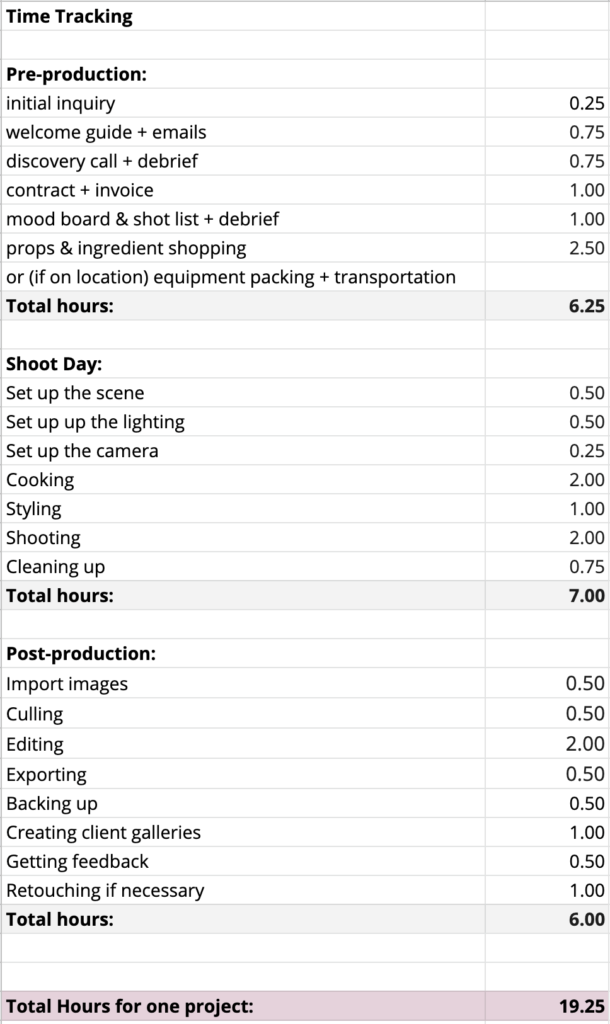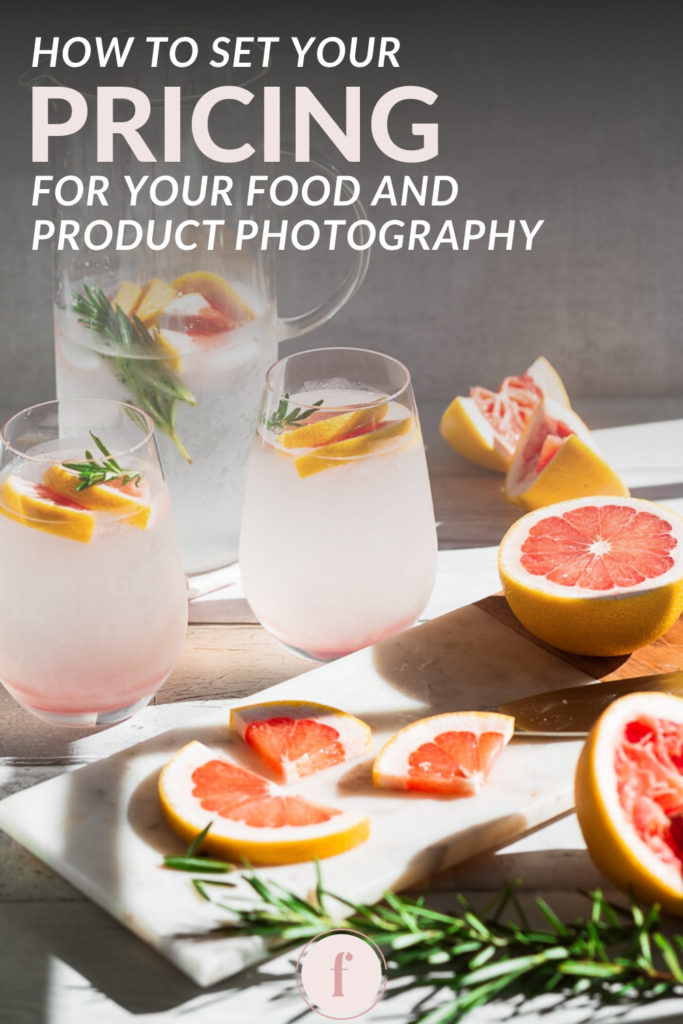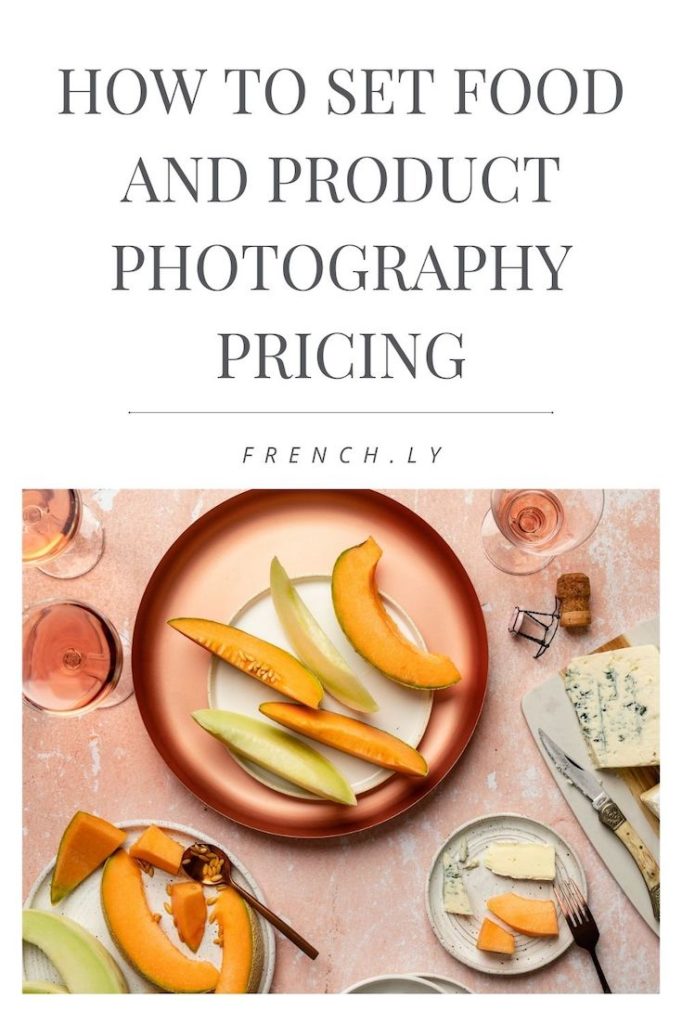In this guide, I show you how to choose who to pitch, how to find the right contact information, and how to craft a winning pitch.
PITCHING TO BRANDS AND IS THE BEST WAY TO GET YOUR IDEAL CLIENTS, AND YOU CAN DO IT WITHOUT FEELING ICKY
Gimme the Guide!
11 FOOD PHOTOGRAPHY DOCUMENTS EXPLAINED
Top Posts
11 PLACES TO SOURCE AFFORDABLE PHOTOGRAPHY PROPS AND BACKDROPS
30+ FOOD STYLING TIPS TO ELEVATE YOUR FOOD PHOTOGRAPHY
Free Resource
About Frenchly
I am a food + product photographer & educator specializing in eco-friendly and sustainable brands. When I am not working with clients, I empower creatives to start their journey by sharing my knowledge on the business of food + product photography.
How to Set Food and Product Photography Pricing
July 23, 2020
Please note – some of these are affiliate links, which means I’ll make a small portion of the profit if you purchase something, at no extra cost to you! Thanks for supporting us!
Are you struggling to decide what you will charge for your food and product photography services? Then read on, because this one is just for you.
Now I’m not going to talk specific numbers here, because they could vary a lot depending on your location, experience level, and niche. However, I AM going to hold your hand and walk you through the process of finding the right number for you, right now. {Yes, just “right now”…your prices should absolutely change over time!} Consider this:
Your clients don’t know photography. That’s why they came to you.
They don’t know what goes into it and they don’t know how long it really takes. That means they don’t have a way of understanding what it should cost! It is your job to educate them. But first, you should do a little soul searching.
What are you actually charging for in your food and product photography pricing?
What does the average client think they’re paying for? Time {but possibly only time spent on the shoot}, printing {if you offer it}, and maybe the price of your editing software. You and I know there’s a lot more to it than that:
The Intangible
Some aspects of your work that you charge for can be hard for clients to understand, because they are so abstract. However, those aspects take up a significant portion of your value and you should consider them carefully as you set your food and product photography pricing.
- Experience – You may not have a lot of this yet if you’re just setting pricing, but you have probably built a portfolio. That’s experience! Get paid for it!
- Creativity – You are probably in this business because you’re naturally creative. People who aren’t, hire people like you. You have something they need! Get paid for it!
- Training – Have you taken classes? Interned? Taken webinars and read books until your eyes crossed? All of that is going into your work. Get paid for it!
- Rights – If you take the images, the rights almost definitely belong to you unless you sign them over. If your clients want to actually USE their images, they need the rights. Get paid for them!
- And yes, time! – Your time IS valuable, and a single project requires a lot of it. From outreach to planning, to shooting, to editing and final delivery, you dedicate undivided time and attention to your work. GET PAID FOR IT!

Do you actually track exactly how much time goes into a client shoot? When you account for everything from pre to post production, it can easily add up to 20 hours. Are you sure you want to charge a couple of hundreds of dollars for this much work?
The Tangible
Fortunately, other aspects of commercial photography pricing are easier to quantify. These are things that the client generally understands after you {tactfully} explain them, they just aren’t things a client would think of on their own.
- Equipment – Everyone knows cameras are expensive, but once you’ve bought one, that’s it…right? Well, not if you want studio lighting, more than a kit lens, tripod(s), editing equipment, and a hundred other things professionals use regularly.
- Studio space – Even home studios cost money. You’re still heating the place, aren’t you? Probably still paying rent or a mortgage, possibly even marking that square footage as an expense on your taxes!
- Travel expenses – Gas isn’t getting any cheaper, but also, travel takes TIME. And time is MONEY.
- Admin expenses – Got a CRM? Maybe a lawyer is drawing up your contracts, or an accountant is managing your business funds. You probably pay to keep a website up and running, and probably an editing software subscription, too. You’re not making a profit until those things are paid for.
- Team expenses – Maybe this isn’t a concern in the beginning, but at some point you may graduate to an assistant. Or maybe you have a web designer or a copywriter, or you may hire consultants for certain projects.
- Extras – Custom props, backdrops, and equipment rentals should absolutely factor in.
Food and Product Photography Pricing models to consider:
Now that you really understand what goes into your pricing, it’s time to decide how you’re going to charge. There are many different ways to price photography services. While no way is technically right or wrong, some do work better than others for food and product photography pricing.
By the hour
Newer photographers prefer to charge by the hours because it’s easier to wrap their head around it and it’s fairly easy to understand {and explain}. However, it’s tedious to track and easy for clients to dispute later. Also, it is very common for photographers {even seasoned ones} to underestimate how long a project will take. When this happens, you either end up not billing all the hours and shortchanging yourself, or charging all the hours and make an unhappy client, who is being charged more than he was told. Now, none of these options sound too great, right?
You may argue that you are very good at estimating your time – good for you! {I am not…} . But consider this: as you grow as a photographer, you will be able to complete the projects in less and less time. For the same hourly rate, you would actually make less money for the same work, just because you got better? Unless you drastically increase your hourly rate, this model just doesn’t make sense.
By the image
This is the model that I use the most, because I do a lot of ‘product style’ food photography. Those projects usually don’t involve any cooking or recipe creation and focus on showing the product “in use” or in a lifestyle setup.
I created some packages that are priced by the number of images (5, 10, 20 etc.). The larger packages are obviously more expensive but the price by image is less because I only need to do all the pre-production work once. This model is often referred to as a sliding scale.
This is a good halfway point between hourly and by-the-project. It also allows you to charge for additional images from the same shoot down the road, if the client is very happy with how the first batch performs.
By the project
This gives you a chance to look more holistically at your responsibilities and charge based on the entire process. Most experienced photographers charge a “creative fee” which includes styling and shooting time, as well as the pre and post production work. Some photographers include the expenses in this fees (groceries and props), while others like to separate these in a different line item.
This is a great model, but you need to be very clear on a few things before you can use this model:
– number of images,
– level of food styling required / complexity of the recipe
– prop and ingredient budget,
– usage rights for the images.
You will need to have all these details before you can you put together a quote.
If you decide to itemize your quotes and invoices to help your client understand more clearly how you got to the number they are paying, be careful as it can sometimes lead to clients trying to pay à la carte to lower the overall cost of the project.
{“Do we really need to rent that costly bit of equipment, even though it’s the most effective way to get the exact styling I asked for?” Yes. Yes, we do.}
Don’t forget to factor copyright and usage rights into your pricing model. As a photographer, and creator of the images, you are the legal owner of the intellectual property. For the clients to be able to use your images, they need to pay you a licensing fee. Make sure this is reflected in your contract.
Whichever model you choose, be sure to get a deposit. It incentivizes your client to follow through on their end of the deal, and it compensates you for the time and effort you put into landing the client, preparing for their project, and closing out their slot to other clients.
Useful tools for food and product photography pricing:
There are a few reputable pricing calculators out there. I do really like the one from NPPA, which gives you a great idea of what to charge for your creative fee. It is based on the third pricing model we talked about and does not include the usage rights. You can calculate the usage rights using the Getty images calculator. Full disclosure – the Getty prices are pretty high, so I came up with a percentage that I apply to them, that makes sense with my business and my goals. You will need to do some testing to figure out what works for you.

To come up with an accurate pricing structure, you need to account for all your expenses. The calculator from the NPPA is a great tool for that.
I also strongly advise that you start keeping track of the time you spend on your client’s projects. You might be surprised by how much time you spend from start to finish. Grab yourself a kitchen timer {I love this guy} or use an online tool like Toggl to record where you spend your time. Make sure you record everything {including sending emails, preparing invoices and contracts, ingredient shopping, etc.) to get an accurate view of how much time a client {or personal} project takes you!
How to command higher food and product photography rates:
After considering all of these aspects, you should have a pretty good idea of where you’re going to stand with your food and product photography pricing. I once had a coach who encouraged me to “send quotes that made me want to throw up”. Yikes, right?! Seriously, it never feels good to ask for a lot of money, but it’s important to know your worth and charge accordingly. It’s the best way to avoid burnout!
If you believe you have come to a reasonable number and you are not altogether happy with it, don’t let it get you down. There are a lot of things you can work on to build up your value, which will allow you to charge more for your services:
- Elevate your brand. Look at your digital presence. Does it reflect what you offer as a photographer? Is it easy for potential customers to find and contact you? Those things are a very big deal to today’s photography clients.
- Develop systems and processes. Overwhelm is real when it comes to small business admin and upkeep. Put it place some systems to manage all that extra work and save some time so you can give the creative tasks the attention they deserve.
- Improve your workflow. When you’re working efficiently and to industry standards, you can do more work and better work. Which means {ta-da!} you can justify higher rates.
- Transform your client experience. Keep them comfortable and informed every step of the way. This is what turns single-project clients into lifelong raving fans of your brand.
All of these things will increase your authority and your confidence as a photographer. As you grow, it’s a good idea to raise your rates semi-regularly, and being proactive about your professional development justifies that. I know that when I look back to the days of charge $7 per image, I can hardly believe how far I’ve come. You can get there one day, too!
Hey, want to learn more about how those four steps transformed my business? Get on the waitlist for the E.D.I.T. Framework bootcamp here. You’ll get a ton of free stuff {all my client templates, email swipe files, Trello boards, client workflow, and exclusive content, oh my!} as well as live Zoom coaching with yours truly. This is a roadmap to the exact process I used to go from charging pennies on the dollar to making an extremely comfortable living from my own home studio.
For more resources about building and running a successful photography business, be sure to sign up for my email list! Follow me on Instagram, as well, for {almost} daily inspiration and advice about freelancing, photography, and life in general.


Leave a Reply Cancel reply
| Created with Showit
| Design by Oregon Lane Studio
| Privacy Policy
© 2020 Frenchly Photography
Back to Top
THE WEBSITE
THE BLOG
Helping brands and businesses promote a happy, healthy and sustainable lifestyle through stunning food and product photography
I would love to hear more about the different rights and %’s you use. Any guidance there would be fantastic.
Thank you Jennifer! CPR just published a very interesting article about usage rights, I am sure it is going to answer a lot of your questions: https://commercialphotography.guide/why-commercial-photographers-should-approach-work-for-hire-and-full-buyout-shoots-with-extreme-caution/
Let me know if you have any question!
I’m so glad I found you, at a time when I’m looking for exactly what I want to do with photography. My English is not that good yet